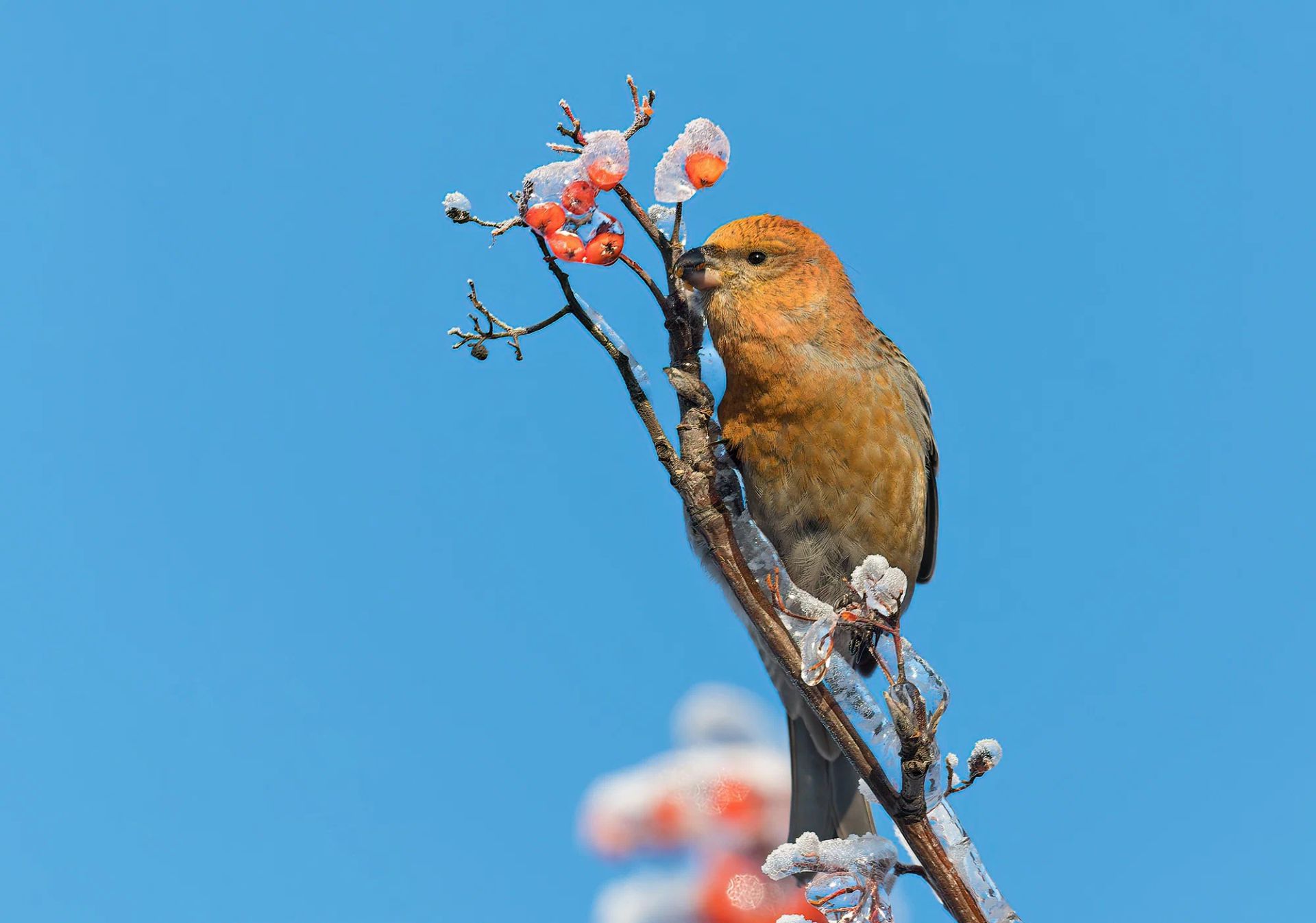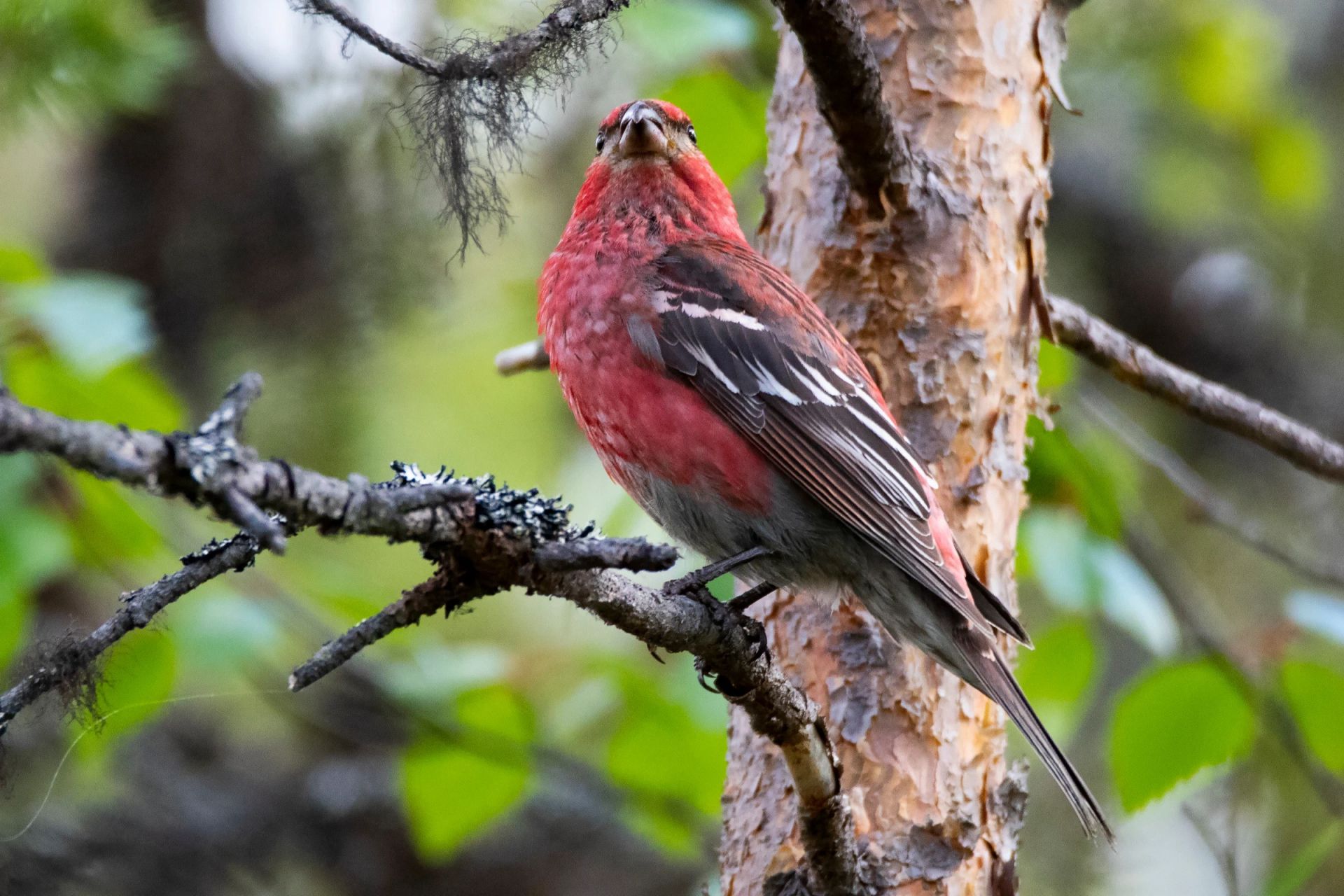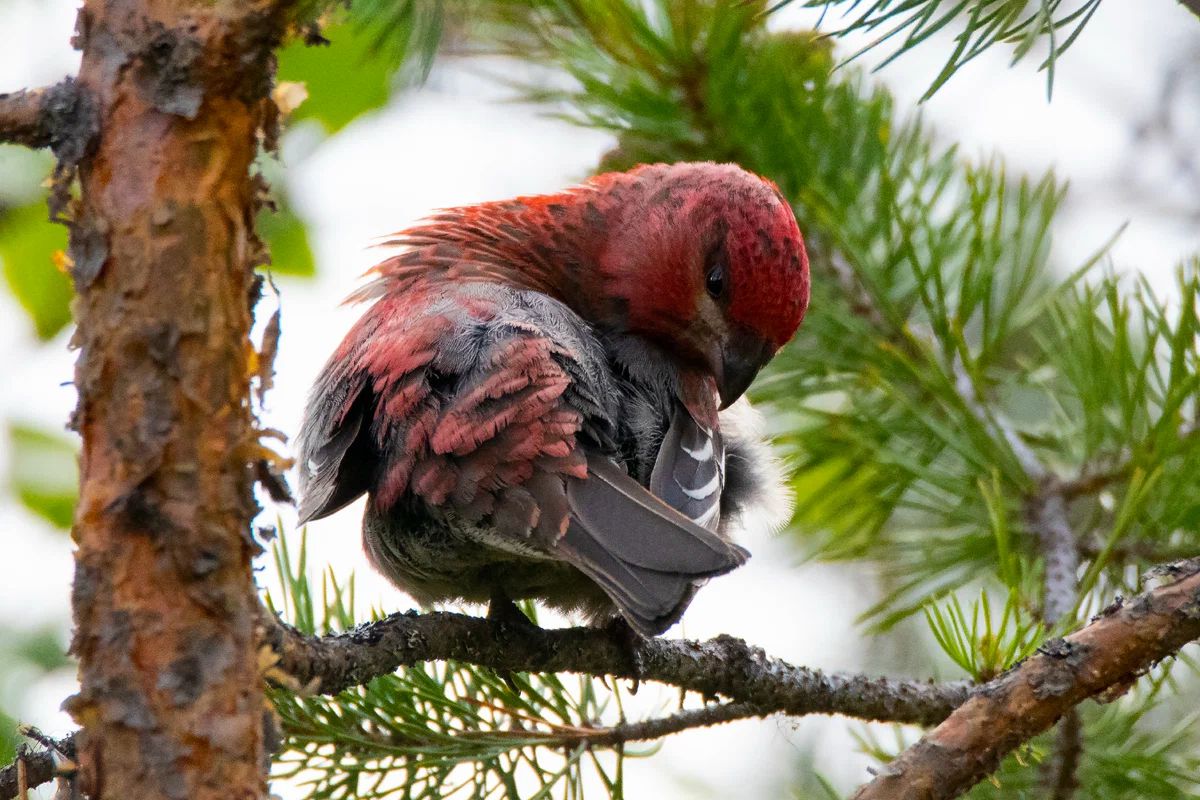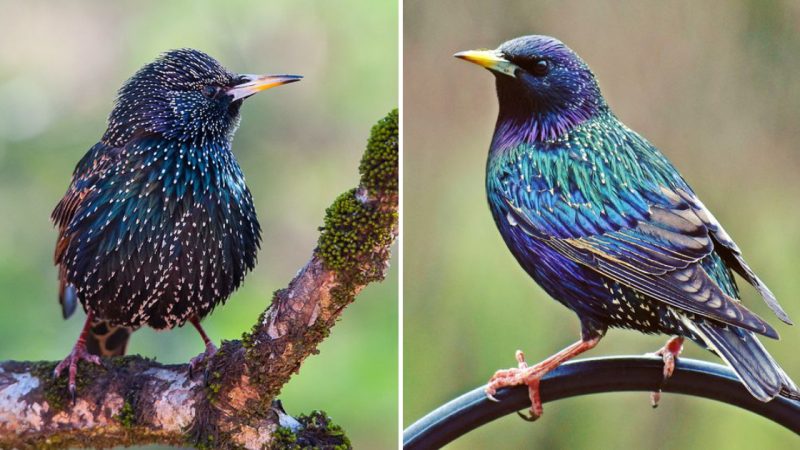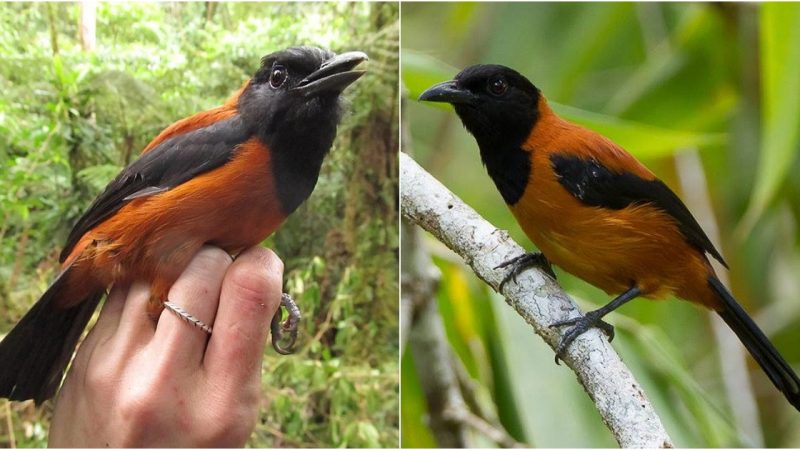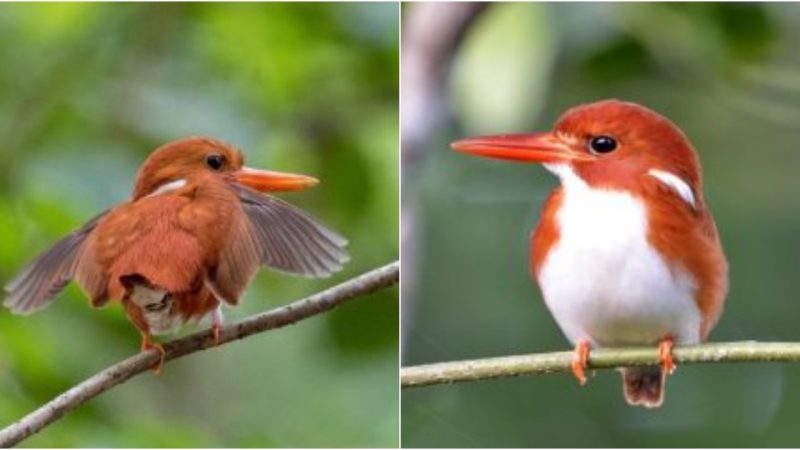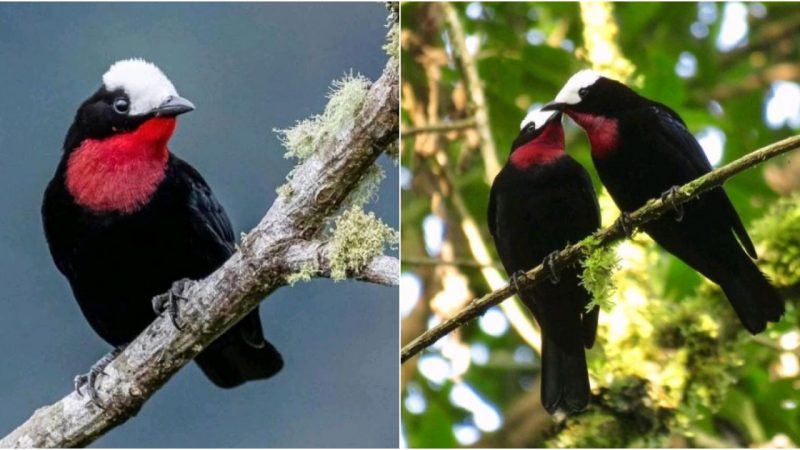The Bullfinch – A Crimson Resident of the Taiga North
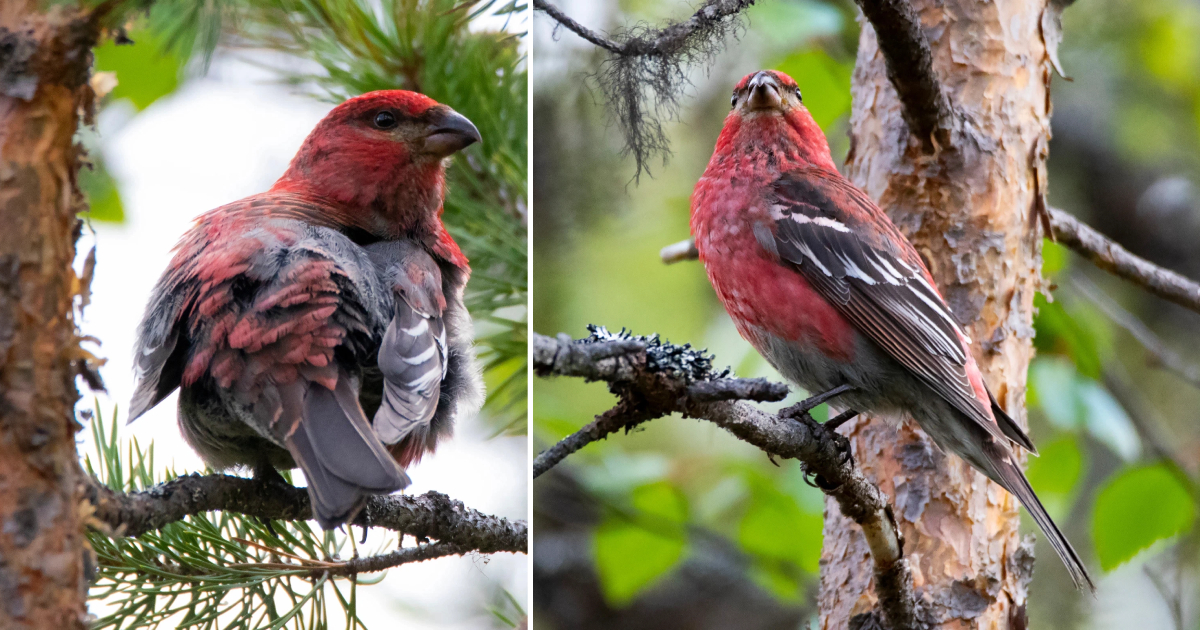
One of the most exciting encounters during our journey on the Kola Peninsula awaited us on the fifth day of our trip. We had set up camp near the village of Lovozero, not far from the Voronya River. In the morning, we decided to take a walk through the forest in search of taiga bird species, and our hopes were fully rewarded. Around one of the bends in the forest trail, we spotted an orange bird perched on a branch, about the size of a sparrow – it was a female Bullfinch! I didn’t have enough time to capture a proper photograph during the few seconds she sat before us, but I didn’t have to be disappointed for long.
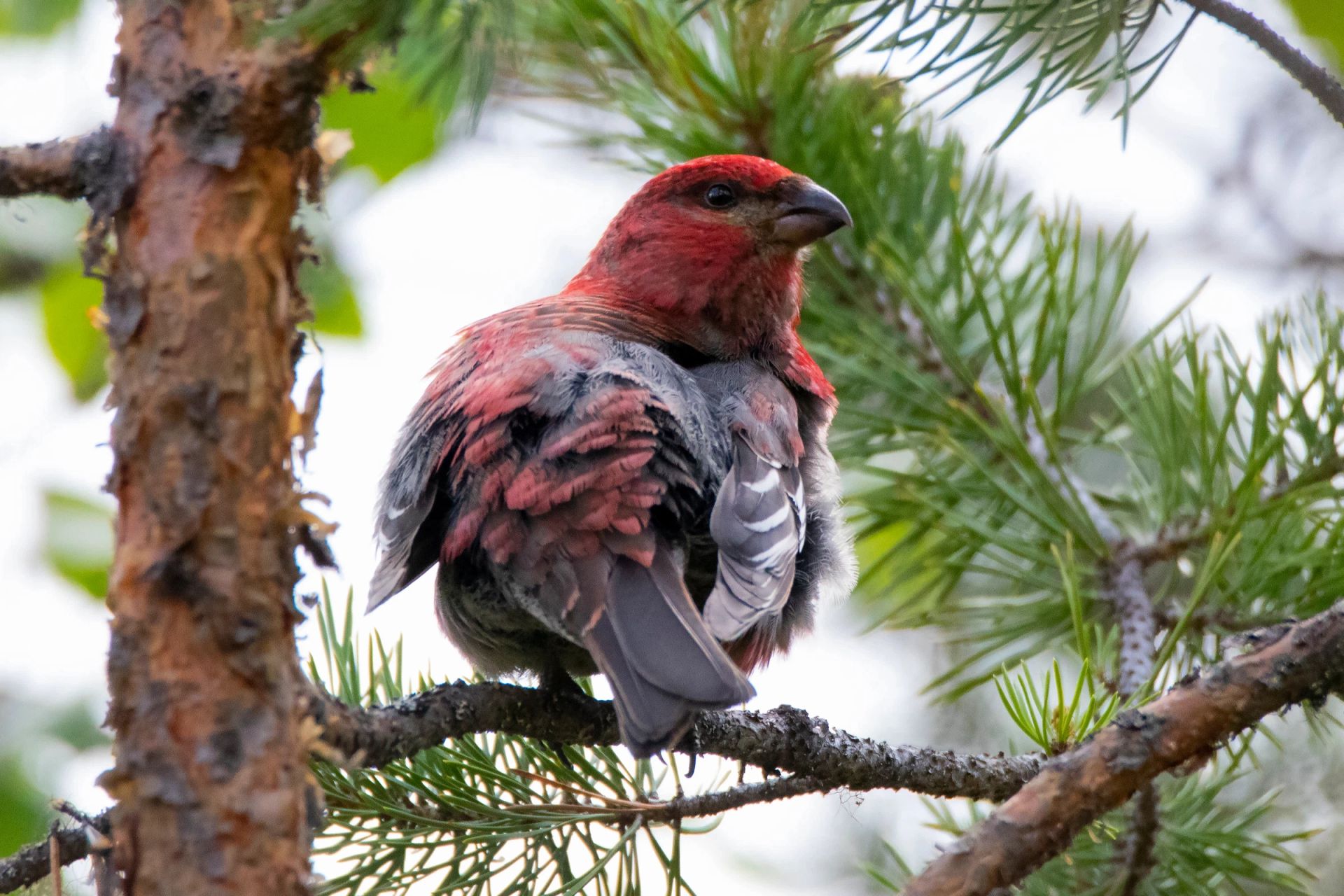
Just a few meters away from us, a male Bullfinch landed! A brilliantly crimson beauty, a resident of the northern forests, allowed itself to be photographed before disappearing into the thickets.
The Eurasian Bullfinch (Pinicola enucleator) is one of the largest birds in the Finch family (which includes species such as the Crossbill, Common Redpoll, Brambling, and Eurasian Bullfinch). The Bullfinch has a compact body and a relatively long tail, reaching a body length of up to 23 cm. Its beak is large and powerful.
The males have a carmine-red plumage, with the exception of a gray belly and brown wings with white stripes. The females are pale orange and gray in color. Juvenile birds in their first autumn acquire a plumage resembling that of females but with a greater number of gray feathers.
The Bullfinch is a bird of the northern taiga forests. It has an extensive range in Eurasia and North America. On our continent, the Bullfinch breeds from northern Europe across Siberia to Sakhalin. In the north, its range extends into the tundra zone along the river valleys. In the south, its breeding range reaches the taiga forests of Altai and Transbaikalia through tongues or separate patches.
The Bullfinch’s call is a series of melodious whistles. Its song consists of similar sounds.
Bullfinches usually nest in coniferous or mixed forests but can also nest in areas with at least a few spruces or firs, such as in floodplain forests. The nest is very neat, woven from grass, twigs, and rootlets. Often, the cup is lined with the fur of large mammals like moose.
Bullfinches begin breeding quite late, in early or mid-June. They lay 3-4 (up to 5) eggs, which the female starts incubating from the second or third egg. This is a compromise between more southern passerines (such as those in the middle latitudes) that only begin incubating when the entire clutch is laid, resulting in all the chicks hatching simultaneously, and even more northern birds like the Willow Ptarmigan, which start incubating after laying the first egg. In harsh northern conditions with a short summer, it is important to raise as many chicks as possible as quickly as possible.
The Bullfinch’s diet consists primarily of plant food: berries, seeds, buds, and young tree leaves. They may also gather insects opportunistically. They feed their chicks with the same food, but the proportion of insects in their diet is higher.
Residents of the temperate zone may also encounter Bullfinches, but during the winter when they undertake migrations, occasionally reaching even the steppe zone. Small flocks of Bullfinches are not uncommonly found in cities as well. In certain years, encounters with Bullfinches can become quite frequent. For example, this year in Nizhny
Novgorod and its surroundings, Bullfinches have been observed several times since late November. The increasing frequency of encounters may also be related to the growing number of birdwatchers.

